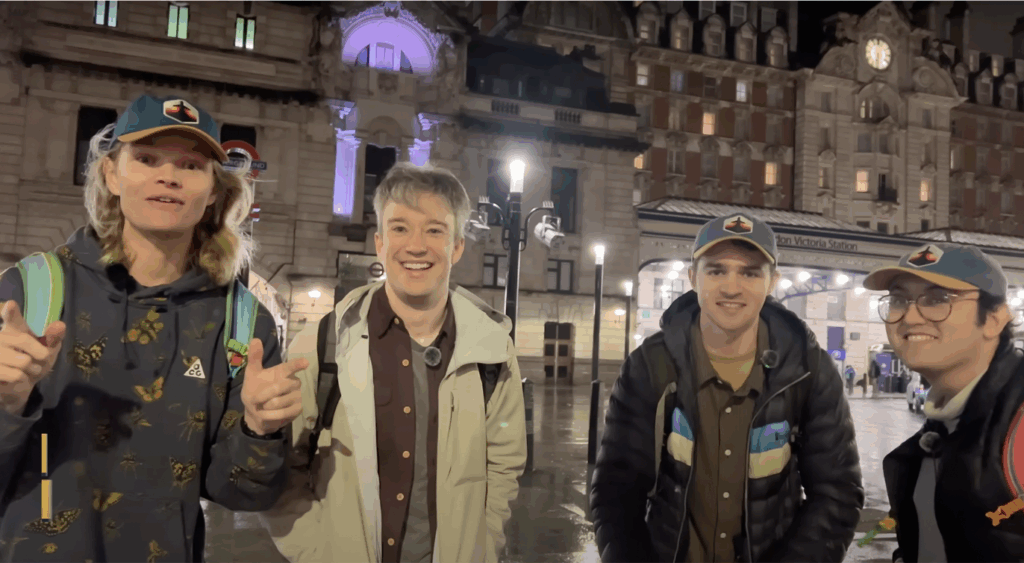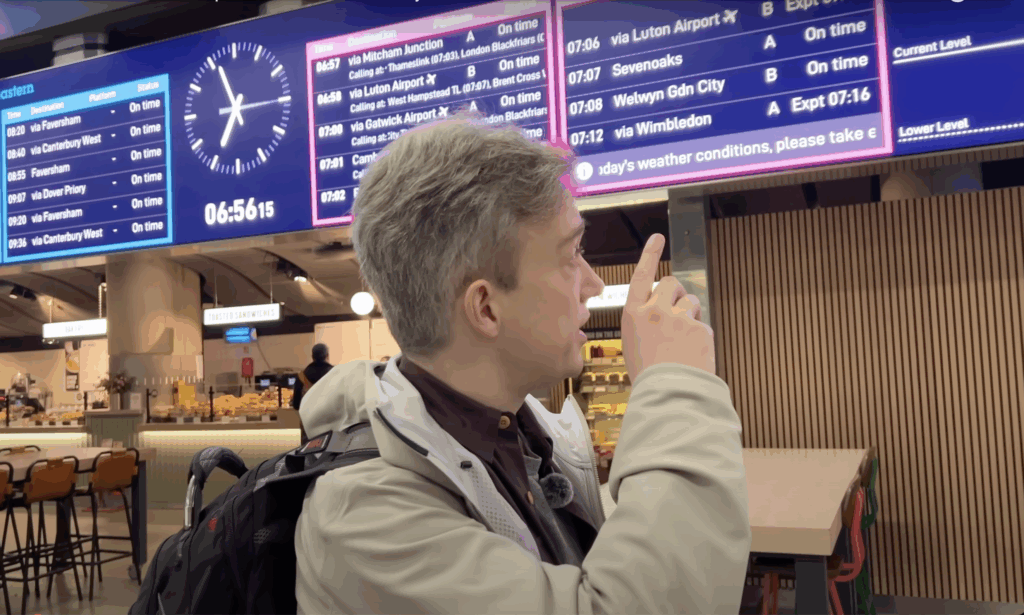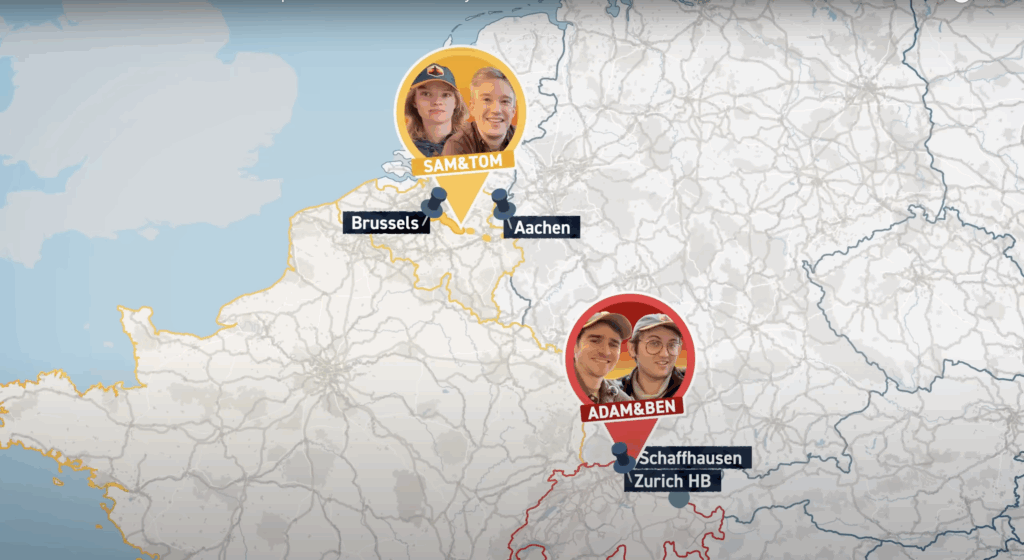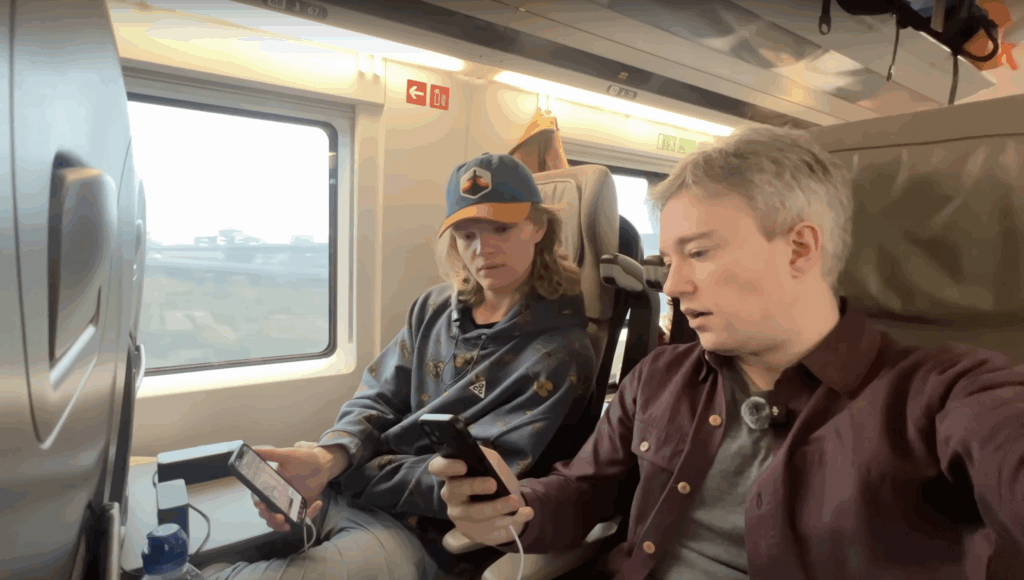These YouTube streamers have turned the stress of travel into a game
Description
Think about the most frustrating aspects of international travel: navigating a new city’s transit system, dealing with language barriers, racing to catch a connecting flight or fumbling with foreign currency. All of these challenges can turn leisure into stress.
A new game has now turned the nerve-racking logistics of world travel into a competition.
“Jet Lag: The Game,” is an online video series where travel mishaps aren’t obstacles — they’re the point of the game.
<figure class="wp-block-embed is-type-video is-provider-youtube wp-block-embed-youtube wp-embed-aspect-16-9 wp-has-aspect-ratio">
The brainchild of American creators Sam Denby, Adam Chase and Ben Doyle, “Jet Lag” has built a sort of cult following by blending real-time travel with high-concept gameplay.
It’s almost a combination of “The Amazing Race” and Google Maps, but with fewer production crews and more chaos.
“We’ve played hide-and-seek across entire countries,” Denby said. “We’ve played tag across entire regions of Europe. We’ve done races from the top to bottom of countries. We’ve even done a race all around the entire world.”
<figure class="wp-block-image size-large">
 <figcaption class="wp-element-caption">From left to right wearing “Jet Lag: The Game” hats, YouTubers Sam Denby, Adam Chase and Ben Doyle, along with a friend, get ready to compete in the travel game they made into a video series.Courtesy of “Jet Lag: The Game”</figcaption></figure>
<figcaption class="wp-element-caption">From left to right wearing “Jet Lag: The Game” hats, YouTubers Sam Denby, Adam Chase and Ben Doyle, along with a friend, get ready to compete in the travel game they made into a video series.Courtesy of “Jet Lag: The Game”</figcaption></figure>Each season, the trio embarks on an elaborate, global-scale challenge — racing to visit the most countries in six days, playing tag across a whole continent, even evading capture in a sprawling game of hide-and-seek across Japan. All the while, they navigate the ups and downs of public transit and the logistical curveballs world travel inevitably throws their way.
“We sometimes say that we play board games where the world is our board,” Chase said.
The result is part strategy game, part documentary and, perhaps most interestingly, a master class in transportation logistics. According to Denby, the idea for the series was born out of the trio’s own experience dealing with the travails of international travel.
“We were thinking it would be fun to almost put us in the situation where you’re struggling to get from one place to the other for whatever reason, and you’ve sort of just got to figure it out,” he said. “And it turns out that that is decently entertaining.”
<figure class="wp-block-image size-large">
 <figcaption class="wp-element-caption">“Jet Lag: The Game” turns the stress of travel into a competition.Courtesy of “Jet Lag: The Game”</figcaption></figure>
<figcaption class="wp-element-caption">“Jet Lag: The Game” turns the stress of travel into a competition.Courtesy of “Jet Lag: The Game”</figcaption></figure>The show, which airs first on the subscription platform Nebula before wide-release on YouTube, has been a hit, receiving millions of views, and it’s now Denby, Chase and Doyle’s full-time job.
Fans don’t just watch; many of them try the games themselves, albeit on a smaller scale.
“I think one of my favorite things to hear from our audience is that they’ve taken a concept that we created, tried it themselves and, in doing so, discovered parts of the town or city that they live in and have never been to.”
According to Brooke Erin Duffy, a professor at Cornell University who studies social media and influencer culture, part of the reason “Jet Lag” connects with viewers is the show’s unpredictability. The team doesn’t chase Instagram-famous landmarks or Michelin-starred meals. By virtue of the games they’re playing, they often end up in far-flung towns, staying in random hotels, eating whatever food they happen to be near.
<figure class="wp-block-image size-large">
 <figcaption class="wp-element-caption">“Jet Lag: The Game” allows travelers to discover places they may not have otherwise explored.Courtesy of “Jet Lag: The Game”</figcaption></figure>
<figcaption class="wp-element-caption">“Jet Lag: The Game” allows travelers to discover places they may not have otherwise explored.Courtesy of “Jet Lag: The Game”</figcaption></figure>“They’re giving us a kind of behind-the scenes idea of what it’s really like,” she said.
Duffy argues that “Jet Lag” is a sort of double-whammy when it comes to attracting viewers. It gives them a genuine, relatable travel experience while also gamifying everyday life.
“Game content, whether we’re talking about actual games or various gamified situations, is one of these social media formats that has done well since the emergence of YouTube creators now 20 years ago,” she added.
These days, Duffy said, just about anything can be gamified — a sure shot for influencers to get a bigger audience. Where it can get dangerous, she argued, is when advertisers start paying influencers for the content they create.
<figure class="wp-block-image size-large">
 <figcaption class="wp-element-caption">Sam Denby (left) is one of the creators of “Jet Lag: The Game.”Courtesy of “Jet Lag: The Game”</figcaption></figure>
<figcaption class="wp-element-caption">Sam Denby (left) is one of the creators of “Jet Lag: The Game.”Courtesy of “Jet Lag: The Game”</figcaption></figure>“We don’t know if the meal they just had was the most fantastic thing they’ve ever eaten or if they have been paid [to promote it], and that’s all part of the mystique,” she said.
The team behind “Jet Lag,” for its part, insists that they are not paid or receive any compensation to eat at certain restaurants or stay at specific hotels. In fact, where they go and who they meet are often entirely dictated by the game itself. More often than not, their destinations aren’t planned at all, according to Chase.
“One time, during a game of tag, a guy in Slovenia offered to hide me in his house,” he said.
And that’s the core of what the “Jet Lag” team hopes to communicate to its audience — that even though travel is stressful, if you take a breath, try to have fun and go with the flow, you’ll be surprised to see where you end up — and who might even offer to hide you in their home.
The post These YouTube streamers have turned the stress of travel into a game appeared first on The World from PRX.





